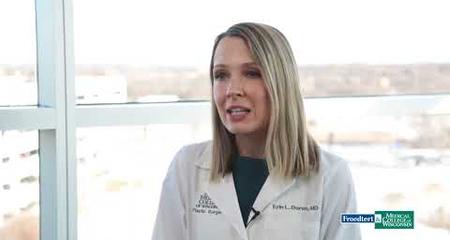In a tummy tuck (abdominoplasty), a plastic surgeon removes fat and extra skin from your abdomen. The procedure may include liposuction as well.
After a tummy tuck, your belly will be flatter and look tighter.
Why Should You Have a Tummy Tuck
Pregnancy and excess weight can leave you with extra skin and sagging abdominal muscles. If other methods to tighten your abdominal muscles haven't worked, you may consider a tummy tuck. You should NOT get a tummy tuck if you are planning to get pregnant or if you are planning to lose a great deal of weight in the future.
Preparing for a Tummy Tuck
At your initial consultation, our staff will sit down with you to go over your desired outcome and concerns. We take the time to listen and truly understand your goals. Based on your responses, your surgeon will make a personalized procedure recommendation.
We will also take a health history, including the following:
- Any drugs you are taking, including all prescription, over the counter, vitamins and herbal supplements.
- Any allergies to medications
- Any bleeding issues, including any blood-thinning medication or supplements that increase risk for bleeding
Your care team will tell you when to stop eating and drinking before the procedure and if you need to take a shower with special soap to prevent infection. If you smoke or use nicotine products, talk to your doctor about when to stop using them before the procedure.
You will need to find someone to drive you home after the procedure.
What Happens During a Tummy Tuck
The surgery takes between two and five hours. You will have an IV in your arm to provide fluids and medication. You are completely asleep under general anesthetic during the procedure, and you will have a tube in your mouth to help you breathe.
Your surgeon will make an incision from one hip to the other, with possible extra incisions to remove fat and extra skin. Then he or she will tighten the skin, as well as the muscle and tissue below it. We may need to move your belly button so that it is in the right place after the skin is tightened. Some patients don't have a belly button at all after surgery. You may need drains at the incision sites to remove excess fluid.
Finally, your surgeon will close the incisions with stitches or staples and cover them with bandages. The bandages may put pressure on the incisions to limit swelling or bruising.
After a Tummy Tuck
Your care team will take you to a recovery room and provide pain medication. You might go home that day, or you may need to stay in the hospital for a couple of days. If your surgeon placed drains in your incisions, you will need to come back to remove them.
After surgery, we will help you move from the bed to a chair and then help you start walking around. Coughing and deep breathing will help keep your lungs clear after anesthesia. You may need to wear a binder for extra support around your abdomen. Your surgeon may also prescribe special stockings to prevent blood clots in the legs.
Your care team will tell you when you can take a shower or bath and how to protect your wound. They will also go over the restrictions on how much weight you can lift and when you can resume normal physical activities. Your doctor will let you know when you can add walking to your daily routine and to increase it a little each day. To get out of bed without putting pressure on your wound, roll on your side and use your arms to lift your upper body. If any of this information is unclear, ask questions.
Your surgeon will prescribe medication to prevent infection and lessen pain and swelling. You may also need a stool softener to help with bowel movements. We encourage you to drink plenty of water and eat small high-fiber meals to help your bowel movements get back to normal.
Your care team will talk to you about how to care for your incisions and how to change your bandages. Always wash your hands before touching your bandages or wound area. Watch for signs of infection.
- Fever over 100.4°F (38°C)
- Chills
- Excessive swelling
- Redness
- Warmth around the wound
- Yellow, green or bloody discharge
- Foul smell coming from the wound
Call your doctor immediately if you experience any of these symptoms.
Your surgeon will need to remove any staples or stitches and also check on your progress. We will schedule these appointments before you leave on the day of your surgery.
Tummy Tuck Risks
As with any surgery, there are risks involved. You may experience bleeding or blood clots, so make sure you tell your surgeon about any history with either of these. Your incisions can get infected, so be sure to follow your care team's instructions regarding cleansing and follow-up care.
Your doctor will discuss specific risks with you prior to your procedure.
Virtual Visits Are Available
Safe and convenient virtual visits by video let you get the care you need via a mobile device, tablet or computer wherever you are. We'll assess your condition and develop a treatment plan right away. To schedule a virtual visit, call 414-777-7700.
More to Explore





